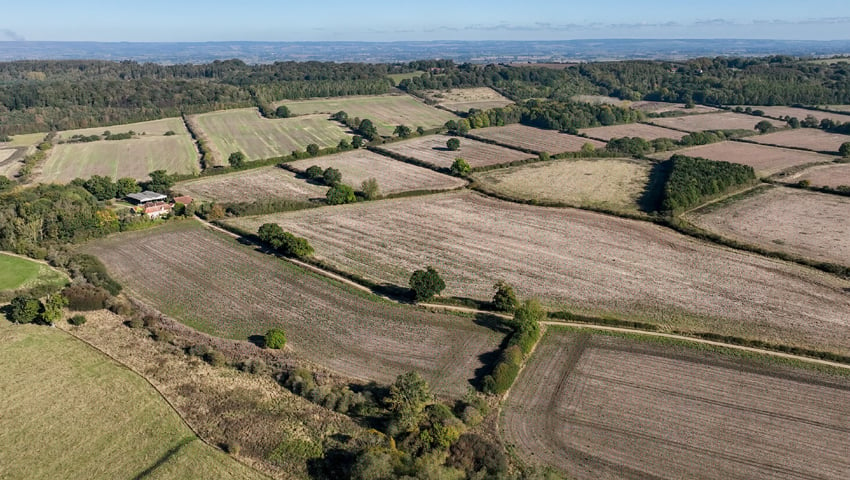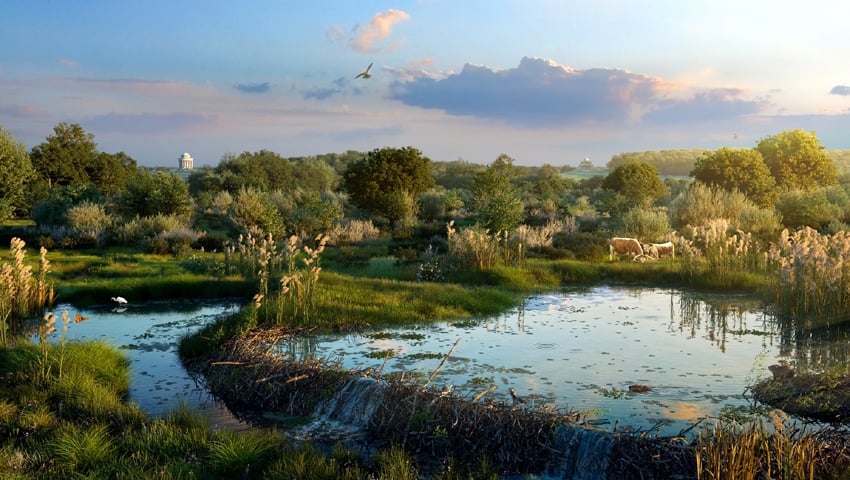Environment Bank has announced the launch of a large-scale 30-year restoration and rewilding project at the Castle Howard Estate in North Yorkshire.
The project will focus on restoring 440-acres of low-yielding, difficult to farm, agricultural land, situated in the Castle Howard Estate. The site will form the Bog Hall Habitat Bank, providing high integrity Nature Shares for businesses to purchase and contribute to nature restoration.
Set within the Howardian Hills National Landscape, the Bog Hall site has been selected for its substantial biodiversity uplift potential. As the name suggests, it is boggy terrain, making it extremely valuable from an ecological perspective. Part of the area has already been designated as a Site of Importance for Nature Conservation (SINC), making it an ideal location for a project of this kind.
Emma Toovey, Chief Ecology Officer, Environment Bank said, “We’ve had the pleasure of working closely with the Castle Howard Estate Team, who are passionate about protecting the natural world. This project is particularly exciting for us, not only due to its potential benefit for nature but also for the unique opportunity to contribute to the restoration of historic natural features on a nationally significant heritage site.
“The naturally wet and boggy site provides the ideal conditions to nurture and re-establish a vast range of flora and fauna. Most exciting of all perhaps, are our ambitions to re-introduce beavers.”
Bog Hall Habitat Bank – Visualisation

The Castle Howard site as it is now

The project is expected to generate nearly 200 per cent biodiversity uplift and sequester more than 30,000 CO2e (tonnes) over 30 years1. Additional ecological benefits include:
- A 250 per cent increase in bat numbers due to more insects
- Grazing with cattle increases flowering plant diversity by 60 per cent, leading to a 140 per cent rise in bees and butterflies
- Using pigs increases floral diversity by 54 per cent
The project also has the potential to enhance the agricultural productivity of farmland on the Castle Howard Estate and the wider area by creating habitats where pollinators can thrive.
The Hon. Nicholas Howard, Castle Howard said, “Castle Howard has a 300-year history as a custodian of the natural environment, and we now have a key role to play in responding to the ecological challenges we face today. We know we must take quick and urgent action to combat biodiversity loss and help turn the tide on climate change. These plans will ensure we create a positive legacy for our local communities and the wider environment in which they live, securing the future of the Estate for generations to come”
The restoration will follow rewilding principles and transform arable land to a mosaic of newly created grassland, shrubland, ponds and reedbeds, whilst enhancing streams, ditches and woodlands. It will also include the introduction of sustainable grazing livestock, rewilding iconic species like beavers and seeding local plant species to attract rare native birds back to the area, such as turtle doves.
Main image: Bog Hall Habitat Bank, future visualisation
